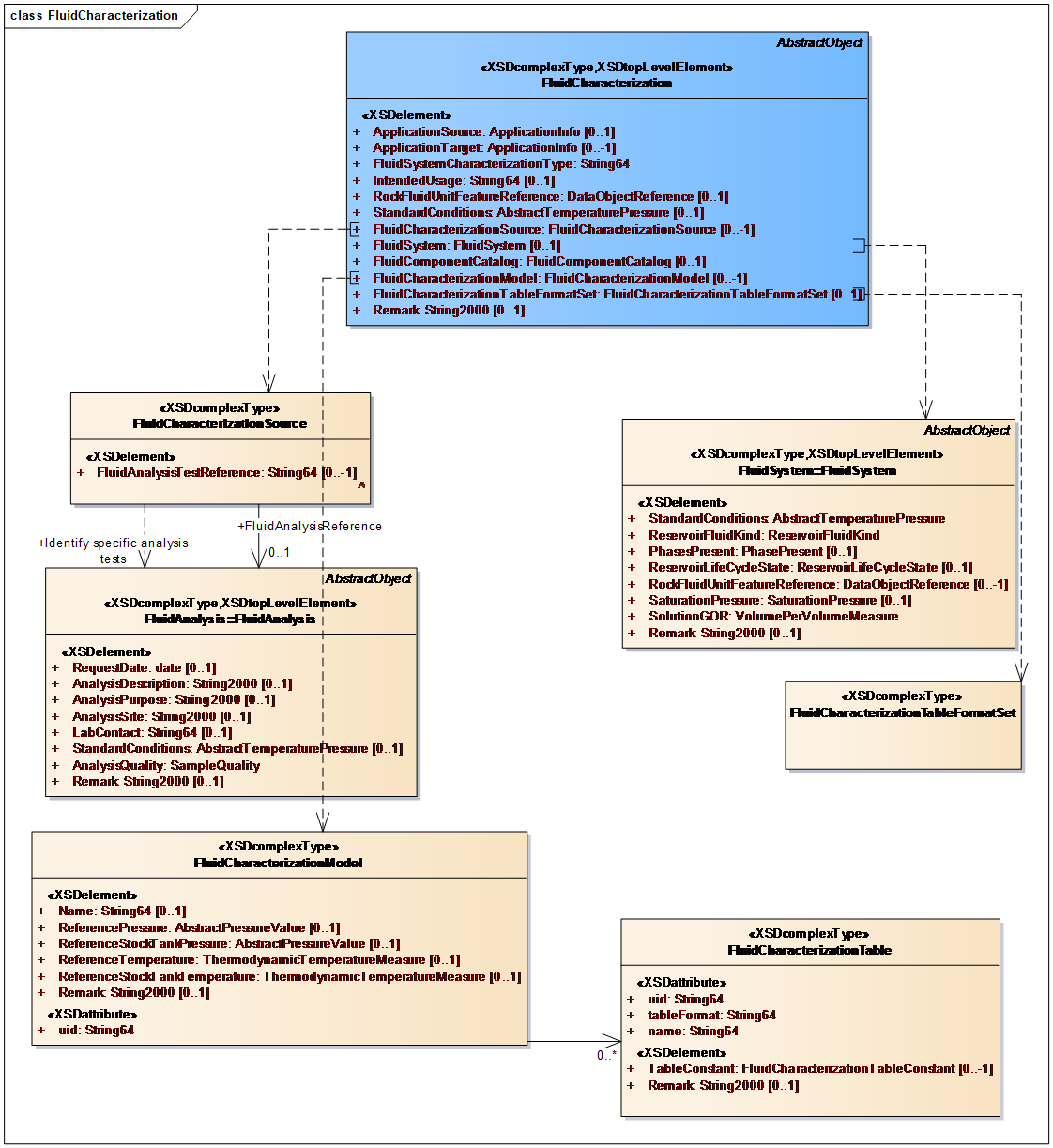10.6 Fluid Characterization
| Topic Version | 1 | Published | 12/09/2016 | |
| For Standard | PRODML v2.0 | |||
The fluid characterization data object (Figure 10.6-1) describes the characteristics and properties of a fluid sample or fluid system under the conditions expected in a historical or future state. The characterization may be based on the measurements from one or more fluid samples, and usually (but not always) uses a specialized application that simulates fluid behavior. The typical workflow is to characterize individual fluid samples as soon as their data are delivered to the sample owner from a fluid analysis laboratory. Although not standardized, the typical approach includes iterative optimization of characteristics (and in some cases amount) of individual compositional components representing the fluid sample, and parameters of an EoS model (or other mathematical models) to simultaneously represent (simulate), and evaluate (consistency/QC check) experimental PVT data. In some cases, it is required to either represent multiple fluid samples with one characterization or to re-optimize existing characterization for different operating conditions.
Such a developed characterization may be used to produce a data set descriptive of the fluid behavior appropriate for use in upstream workflows, such as reservoir simulation, flow in tubulars, and flow through surface facilities. Flow assurance data (e.g., solid deposit rates, multiphase flow regime maps) are not supported now, although some of the data used (e.g., asphaltenes) are included.
Two basic formats are available to represent fluid characterization results for delivery to consumer applications:
- Model (parametric)
- Tabular

The basic structure is shown in Figure 10.6-1 . A fluid characterization has any number of fluid characterization sources. Each is a reference to a fluid analysis and to the specific tests in that analysis which were used for this characterization. The fluid system is also referenced. There are then a set of fluid characterization models, and these can either have model parametric representation (see below), and/or a set of tables of output properties. The format of these tables is contained in its own object.
A fluid characterization may also be represented as a combination of tabular and parametric approaches (e.g., in thermal compositional reservoir simulation applications), where part of fluid characterization (e.g., k-values) is represented in a parametric model (EoS), and another part of fluid characterization (e.g., component viscosities) is represented in a tabular format. It is important to note that the current schema is designed to represent only one fluid sample/system at a time.
With either representation, information is included to describe the geologic feature and the fluid system being characterized. Also provided are references to the specific fluid samples and laboratory tests that were used as the basis for the characterization. Additional information found in the fluid characterization data object are the identity (and version) of the application used for its characterization, and the use case for which the characterization was done.